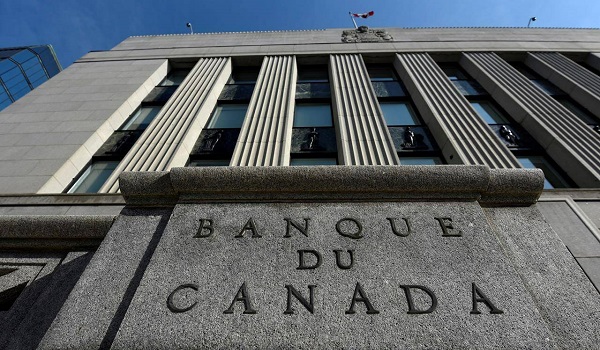Recent government policy expected to increase rental housing construction in Canada
A pair of recent government initiatives aimed at boosting rental housing construction are critical, the industry contends, after developers had put projects on the shelf because they were becoming cost prohibitive.
The policy changes, announced in September, cut mortgage and construction-related expenses as the price of borrowing has soared along with costs for building materials and labour.
In what was an unusually rapid response, developers immediately said the initiatives would make thousands of rental units more feasible to build and finance.
Over the years, other government efforts to create more rental housing have been met with lacklustre interest. Rental stock is currently at a massive deficit, according to policy-makers, after scant rental construction from the mid-1990s through 2014.
One new initiative cut the 5-per-cent goods and services tax that developers are required to pay after construction is completed. The tax is applied to the assessed property value of each rental unit. Ontario said it would also cut the provincial tax on new rental units, which along with the elimination of the GST would save developers 13 per cent on every new apartment unit.
The other initiative expands the federal Canada Mortgage Bond (CMB) program by $20-billion, to a total of $60-billion, and earmarks the additional funds for new rental construction.
This program makes low-cost funding available to mortgage-lenders, allowing them to offer cheaper mortgages to developers. It ultimately reduces the cost of the mortgage, or term debt, developers must obtain to pay off their construction loans after apartment buildings have been completed.
Both initiatives help developers at a crucial point when they have finished initial construction. The GST elimination cuts the tax bill, which developers say is meaningful given their small profit margins.
Major developers such as Dream Unlimited., Fitzrovia Real Estate, Tricon Residential Inc. and Minto Group have collectively said the waiver will allow them to proceed with more than 10,000 new rental units.
In addition, the CMB expansion gives developers more certainty about their funding costs when they need to refinance their construction loan into a mortgage, or long term debt.
“It was getting to the point where borrowers were really worried about whether their financing would be there,” said Jason Ellis, chief executive of First National Financial, one of the country’s largest non-bank mortgage lenders.
“You can imagine a client having a $200-million floating rate loan for development and worried they can’t take it out at completion. I mean, the alternatives are very expensive. So this [expansion of the Canada Mortgage Bond program] is very, very positive news,” he said.
The cost of building one rental apartment unit averages about $800,000 in the country’s most expensive markets of Toronto and Vancouver. That means if an apartment building is 250 units, a developer would spend $200-million.
The Department of Finance estimates mortgages funded through the CMB program have an interest rate that is one to two percentage points lower than alternative forms of financing.
“Think of the difference between paying 4.5 per cent on your term debt or paying 6 per cent. Many projects just wouldn’t work,” said Michael Waters, the chief executive of Minto Group, one of the country’s largest apartment developers and operators. “It makes a huge difference.”
Here’s how the CMB program works for rental construction:
When real estate developers plan a new rental building, they borrow from a lender to finance the construction costs using short-term, floating-rate loans. When the building is finished, developers refinance this loan, taking on a long-term, fixed-rate mortgage. If developers want to access the cheaper funding, they must purchase mortgage insurance from either CMHC or a private insurer.
Lenders typically don’t hold these term mortgages on their books. They bundle them up with other mortgages and transform the pool of loans into a mortgage-backed security (MBS) – a financial asset that pays interest from the cash flow from the mortgages. That MBS is sold as a security to investors. The lender then uses the proceeds from the sales of MBS to fund new mortgage loans, and the cycle continues.
Mortgage securitization is particularly important for smaller banks and non-bank lenders that don’t have a large deposit base from which to make loans.
What’s the government’s role in all of this? First, Canada Mortgage and Housing Corporation (CMHC), the federal housing agency, guarantees the timely payment of MBS interest payments. Secondly, CMHC acts as a kind of market-maker, funnelling private capital into the MBS system. That’s where the Canada Mortgage Bonds come in.
Mortgage securitization began in Canada in the 1980s, but gained little traction for the first decade and a half. Despite the payment guarantee, investors didn’t like the irregular payment schedule on MBS.
In 2001, CMHC established the Canada Housing Trust to buy MBS from lenders. In turn, it funds these purchases by issuing a new type of security: a Canada Mortgage Bond. The trust acts as a middleman, passing the cash flow from the MBS along to CMB investors, but restructuring it into more normal bond-like payments.
Currently, Canada Housing Trust issues $40-billion worth of CMBs a year, allowing it to buy the same amount of MBS from lenders.
Because CMBs resemble normal government bonds, they’re attractive to investors but also have a lower interest rate compared with straight-ahead MBS. That has two outcomes: It lowers the ultimate cost of funds for mortgage lenders, allowing them to offer cheaper mortgages; and it ensures that there is a steady flow of private capital into Canada’s mortgage securitization system.
By expanding CMB issuance by $20-billion a year, Ottawa is making more low-cost funding available to mortgage lenders, who can then offer lower-cost mortgages to developers – something that has become increasingly important as interest rates have risen across the board.
“It creates confidence within the developer community and the lender community that upon completion of those construction projects, there will be a larger allocation of CMB funding available to term out those completed projects,” said First National’s Mr. Ellis.
“My biggest concern really with all of this is, the deal sizes are getting larger and larger, these new construction projects are huge. And CMB needs to be able to swallow it at completion,” he added.
That was the case for Minto. It recently completed a 500-unit housing project in downtown Toronto. The developer took out a $216-million CMHC insured loan but said it was very hard to do because of the size of the loan.
“Some lenders passed on the loan because of its size,” said Dan Dixon, Minto’s senior vice-president of corporate affairs. “The increase in the CMB pool will help a lot with situations like this,” he said.
While the government is expanding the CMB program, it also announced in the spring budget that it was considering rolling the program into general government borrowing. That would likely mean funding Canada Housing Trust’s acquisition of MBS by issuing normal government bonds. The idea was met with significant pushback on Bay Street, where CMBs are popular assets for investors and brokers make money helping administer the program.
Finance Minister Chrystia Freeland said the recent decision to boost the issuance of CMBs was separate from questions about the future of the program itself, and that consultations about the latter were continuing.
This article was reported by The Globe and Mail
















